SUMMARY
This is AI generated summarization, which may have errors. For context, always refer to the full article.
![[Vantage Point] What will Marcos Jr.’s agenda be in his first SONA?](https://www.rappler.com/tachyon/2022/07/TL-Vantage-Point-Marcos-SONA-July-23-2022.jpg)
This Monday, July 25, President Ferdinand Marcos Jr. will deliver his first State of Nation Address (SONA).
I’m not entirely sure what Marcos Jr. has to tell the Filipino public, but I’m interested to find how his government plans to address what I deemed as the two most important priorities among a host of social and economic problems: unity and the economy that continues to be attacked by the COVID-19 virus.
Unity
For the longest time, our country has been so divided that sustained national progress has been next to impossible. We have witnessed the worse of crab mentality over the course of so many administrations, which perhaps was what drove voters to cast their lot on Marcos Jr. After all, who doesn’t want harmony in Philippine society? I certainly hope that Marcos Jr., who ran under a platform of unity, is not just playing lip service. Whenever he was asked about his vision for the country during the campaign, he often mouthed unity as the penultimate solution to every hurdle the Philippines has to overcome.
True harmony among differing political beliefs is an ultimate dream scenario. After all, we are all in the same ship and expect our captain to steer us out of this figurative stormy, turbulent sea. I’d be among those who would loudly cheer Marcos Jr. on if and when he is able to achieve such a feat.
But for a president who’s supposed to have cornered the bulk of the votes during the 2022 presidential election, I find it strange that his supporters – coming mostly from the troll farms – still continue with their vitriolic attacks against the opposition, most especially, former vice president Leni Robredo. As a majority president, there should be no room for insecurity. I have yet to hear Marcos Jr. issue a conciliatory message toward the opposition.
And then there is the continuing persecution of former senator Leila de Lima. Humiliated, debased, ridiculed by a former president and misogynistic members of Congress, she was thrown in jail based on what she claimed as trumped-up charges. Two key witnesses – Rafael Ragos and Ronnie Dayan – had already recanted their testimonies against her.
Justice Secretary Jesus Crispin “Boying” Remulla said in a June Rappler talk that dropping charges against her is possible “if it’s the only recourse,” adding that a thorough study would be made. “I know that it’s not only the Philippines watching – it’s the world watching us. We will do what has to be done.”
Indeed the world is watching. It is an opportunity for Marcos Jr. to show the country and the whole world that the administration of justice under his watch would not coddle oppressors, but be responsive to the oppressed, and would not turn a deaf ear to the taunts of his trolls. As president, he has the persuasive power to see De Lima released from prison. It will be the ultimate act of unity if Marcos Jr. facilitates De Lima’s release. But does he have the guts to incur Duterte’s wrath?
Pandemic response and the economy
Our economy is now closely hewed to our pandemic response. From 2020 to the last quarter of 2021, the cost of containing the pandemic hugely impacted our financial development and economic growth. As of June 2022, government records show that Marcos Jr. now faces a pool of debt amounting to P12.76 trillion, catapulting the debt-to-GDP (gross domestic product) ratio to a more than 17-year peak, a direct result of the government’s near-term borrowings intended for containing the pandemic and stimulating the economy.
The country’s debts after the Duterte presidency eclipse the P5.94 trillion combined debts of six presidents, starting from the P526 billion debt incurred during the 21.7-year reign of ousted dictator Ferdinand E. Marcos; P344.1 billion during Corazon Aquino’s 6.25-year term; P839.8 billion in the six years in office of Fidel Ramos; P955.9 billion in 2.58 years under Joseph Ejercito Estrada; P2.4712 trillion in Gloria Arroyo’s 9.42-year administration; and P808.6 billion in six years with Benigno Aquino III as president.
It would be interesting to see how Marcos Jr. judiciously executes a cost-effective pandemic response and slays corruption behind its implementation. For every exponential centavo lost to corruption, thousands of lives are at the risk of succumbing to the infection. The BA.5 Omicron subvariant of SARS-CoV-2 is now causing about two-thirds of infections in the United States, with cases now rising in almost every state.
From July 11 to July 17, COVID infections rose to 2,091 a day in the country, or 44% higher than the previous week’s 1,467 average daily cases, the Department of Health (DOH) reported. According to the DOH, 35 of the 14,640 confirmed new COVID-19 cases during that week were severe or critical, while the vast majority were mild, asymptomatic, or moderate. There were 10,271 reported cases the week prior to that period.
Marcos Jr. has made known that he would continue with his father’s legacy of industrialization to pump prime the economy. “We are at present very dependent on the service sector. That is something we need to address very, very clearly, and manufacturing is a very important part of that,” he said to justify the country’s need to shore up the manufacturing sector.
His father launched several industrialization projects during Martial Law, the most ballyhooed of which were the Progressive Car Manufacturing Program (PCMP) and the 11 Major Industrial Projects (11 MIPs).
The PCMP was launched In 1973, participated in by five car manufacturers. With Ford Motor Company providing a stamping plant, Delta Motors Corporation/Toyota, General Motors Pilipinas, DMG/Volkswagen, and a Chrysler Philippines (a joint venture of Mitsubishi and Chrysler) all committed to produce vehicles completely from local materials and designed for local needs.
The 11 MIPs that were unveiled late in 1979 were: a copper smelter, a phosphate fertilizer plant, an aluminum smelter, diesel engine manufacturing, cement industry expansion, coconut industry rationalization, integrated pulp and paper mill, a petrochemical complex, heavy engineering industries, upstream and downstream steel mill, and an alcogas project.
What went wrong?
Marcos fell into a debt-driven economy pit when he borrowed heavily from petrodollar sources, instead of multilateral and bilateral lending institutions that provide official development assistance (ODA) at concessional rates and longer repayment period.
Oil-producing nations at that time were so awash with cash that they were able to lend monies they were earning from petroleum exports. Borrowings were also sourced from commercial banks, which lent at expensive and shorter repayment terms.
Even prior to 2016, social media had been flooded with messaging that projects the two-decade-long Martial Law administration as the “golden age” of the Philippine economy. The truth is that between 1965 and 1985, our GDP grew at an average annual rate of 3.85% only. During the final years of the Marcos regime, the economy plunged to negative growth of 7.04% in 1984 and -6.86% in 1985.
So devastating was the economic fallout that the Philippines became known around the globe as the “Sick Man of Asia.”
When the older Marcos was driven out of Malacañang with his family, the Philippines became one of the poorest non-communist countries in the booming Far East, with a neglected agricultural base, little industry, and the region’s worst debt problems.
The question now is where Marcos Jr. will get funding for his ambitious industrialization program? With the country almost P13 trillion deep in debt, can the Philippines absorb more borrowings?
“Debt is like any other trap,” the 19th century American author Josh Billings has said. “Easy enough to get into, but hard enough to get out of.” How hard? “To the extent that there is no such thing as zero external debt, and both the most and the least-developed countries in the world alike (and all those in between) today struggle more than ever under the burden of what they owe.”
From my vantage point, I believe that when we borrow too much and too often, repayments of loans and interests weaken the objective for which these are intended: enhancing economic productivity. Amassed debts are akin to a tax on the potential harvest of a nation. Allocating a huge portion of funds to pay lenders back means taking away funds that should have gone to education, healthcare, infrastructure, and such priorities.
Will Marcos Jr. impose higher or new taxes? This option could get messy not only because the people are already financially burdened. The issue of the President’s trouble with the Bureau of Internal Revenue for tax evasion could haunt him.
Mr. Marcos was found guilty by a court of having failed to file his income tax return for several years when he was governor in the early 1980s. The Commission on Elections had ruled that this omission was not serious enough to be considered as moral turpitude; hence, Marcos Jr. was not disqualified from running for the country’s highest office.
The issue over whether tax evasion cannot be considered as moral turpitude is one for lawyers to discuss. The concept is amorphous, as far as black-letter laws are concerned. Rather, its boundaries, nature, and characteristics are largely defined by precedent. Lost in the legalistic debate, however, and barely accessible to any non-lawyer, is the specific law on the filing of income taxes that Marcos Jr. violated.
Why is this important? The first legal act of a president is to take an oath, written in the Constitution, to “execute its laws.” The fitness of a person for the office is therefore not simply based on compliance with a checklist of qualifications or disqualifications for the office, but his or her trustworthiness or integrity on seeing that our laws are followed.
In leading by example, the President could position himself as a credible authority figure worthy of respect, trust, and emulation. The world is watching. – Rappler.com
Val A. Villanueva is a veteran business journalist. He was a former business editor of the Philippine Star and the Gokongwei-owned Manila Times. For comments, suggestions email him at mvala.v@gmail.com.
Add a comment
How does this make you feel?


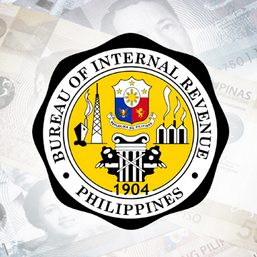
![[Ask the Tax Whiz] Withholding tax under Ease of Paying Taxes law](https://www.rappler.com/tachyon/2022/11/tax-papers-shutterstock.jpg?resize=257%2C257&crop=205px%2C0px%2C900px%2C900px)


![[Rappler’s Best] US does propaganda? Of course.](https://www.rappler.com/tachyon/2024/06/US-does-propaganda-Of-course-june-17-2024.jpg?resize=257%2C257&crop=236px%2C0px%2C720px%2C720px)







![[Closer Look] ‘Join Marcos, avert Duterte’ and the danger of expediency](https://www.rappler.com/tachyon/2024/06/TL-trillanes-duterte-expediency-june-29-2024.jpg?resize=257%2C257&crop_strategy=attention)

![[Newspoint] A Freedom Week joke](https://www.rappler.com/tachyon/2024/06/20240614-Filipino-Week-joke-1.jpg?resize=257%2C257&crop_strategy=attention)

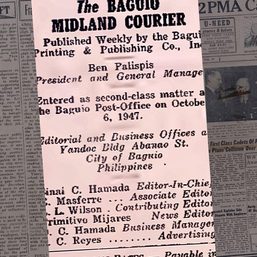

![[Free to Disagree] De Lima stood firm. But some men are trash.](https://www.rappler.com/tachyon/2024/07/TL-Leila-de-lima-stood-firm-some-men-brave-some-trash-July-1-2024.jpg?resize=257%2C257&crop_strategy=attention)

![[Rappler Investigates] When China, Leila, Sara conspire](https://www.rappler.com/tachyon/2024/06/saraduterte-west-ph-sea-leila-de-lima-newsletter-june-27-2024.jpg?resize=257%2C257&crop=279px%2C0px%2C720px%2C720px)

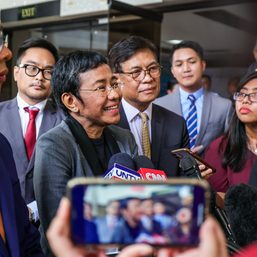
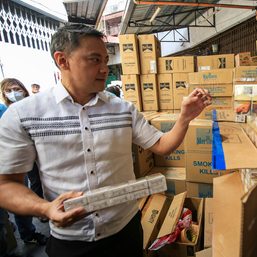
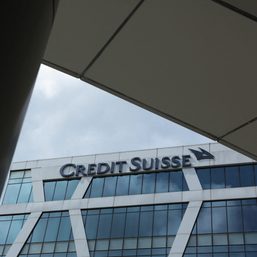
![[OPINION] There is a way to collect the P203-B Marcos estate tax debt](https://www.rappler.com/tachyon/2022/09/way-collect-203b-tax-marcos-september-13-2022.jpg?resize=257%2C257&crop=337px%2C0px%2C1080px%2C1080px)
There are no comments yet. Add your comment to start the conversation.